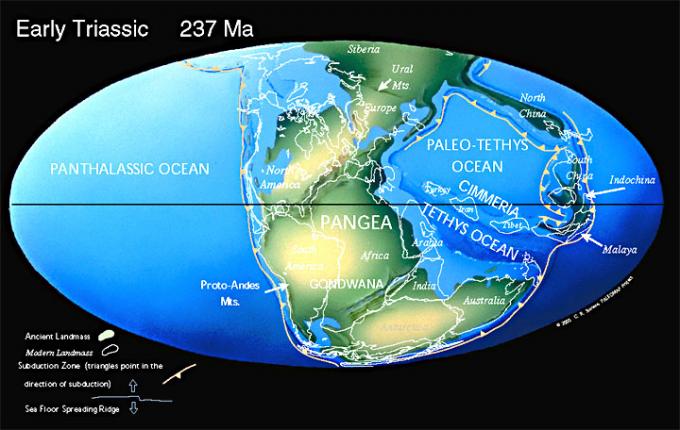Triassic
The Triassic is a geologic period and system that extends from about 250 to 200 Mya (million years ago). As the first period of the Mesozoic Era, the Triassic follows the Permian and is followed by the Jurassic. Both the start and end of the Triassic are marked by major extinction events. The extinction event that closed the Triassic Period has recently been more accurately dated, but as with most older geologic periods, the rock beds that define the start and end are well identified, but the exact dates of the start and end of the period are uncertain by a few million years.
The Triassic began in the wake of the Permian-Triassic extinction event, which left the Earth's biosphere impoverished. The early half of the period witnessed life's slow recovery, while the latter half is characterized by the dinosaurs' rise to dominance. The first true mammals also evolved during the Triassic, as well as the first flying vertebrates, the pterosaurs. The vast supercontinent of Pangaea existed until the mid-Triassic, after which it began to gradually rift into two separate landmasses, Laurasia to the north and Gondwana to the south. The global climate in the Triassic was mostly hot and dry, but the Earth became cooler and wetter as Pangaea drifted apart.
Source: http://en.wikipedia.org/wiki/Triassic | ||
Virtual museum of the Czech Geological Survey, www.geology.cz, (C) Czech Geological Survey, 2011, v.0.99 [13.12.2011]


![[ENG]](img/vlajka-cr.gif) Česky
Česky 
